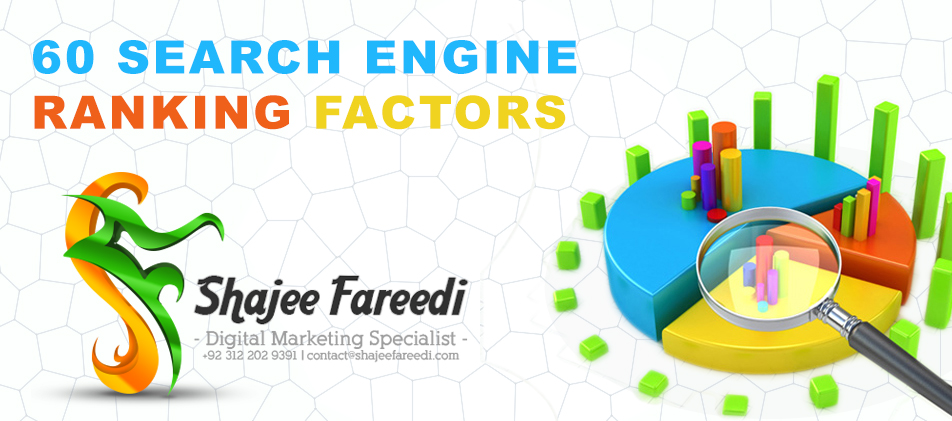In 2025, staying competitive on Google means understanding the major ranking factors that determine visibility and traffic. Here’s a look at the top considerations, integrating over 60 key elements.
1. Content Quality & Relevance
- Keyword Optimization: Proper keyword usage in titles, headers, and body content remains essential. Google’s understanding of semantic relevance has advanced, so using related keywords and synonyms helps in ranking higher.
- In-Depth and Fresh Content: Google favors detailed articles that address user intent comprehensively. Frequently updated content, especially on fast-moving topics like technology, can improve rankings as freshness indicates relevancy.
- Trustworthy Content: Content that demonstrates expertise and reliability through well-sourced information is valued. Adding references, external links, and author credentials can build trustworthiness and authority.
2. User Experience (UX)
- Core Web Vitals: Page load speed, interactivity, and visual stability are essential for a smooth user experience, directly affecting rankings. This includes metrics like Largest Contentful Paint (LCP), First Input Delay (FID), and Cumulative Layout Shift (CLS).
- Mobile-Friendliness: With Google’s mobile-first indexing, sites optimized for mobile devices enjoy better rankings. A responsive design ensures seamless access across devices.
- Bounce Rate and Dwell Time: High engagement metrics—such as longer time spent on a page—signal valuable content. Conversely, a high bounce rate can indicate content mismatch with user expectations, impacting rankings negatively.
3. Backlinks and Domain Authority
- Quality Over Quantity: Links from high-authority sites are more valuable than numerous low-quality backlinks. Having natural backlinks from relevant, reputable sources signals reliability.
- Anchor Text and Contextual Links: Google examines anchor text and values links that are contextually relevant to the content. Diverse and descriptive anchor text strengthens the ranking potential.
- Backlink Profile: Google assesses backlink consistency and diversity. A well-rounded profile with a mix of follow and no-follow links from varied domains is more authentic than sudden influxes of links.
4. Technical SEO and Site Structure
- Site Speed: Fast load times are critical, as slow pages can deter users and increase bounce rates. Compressing images, using reliable hosting, and enabling caching can improve performance.
- Schema Markup and Structured Data: Implementing schema helps Google understand your content better and can improve search visibility through rich snippets.
- Secure and Accessible Websites: HTTPS encryption is essential for security and ranking. Additionally, a clear site structure with a robots.txt file and an XML sitemap aids Google in crawling and indexing pages efficiently.
5. Domain & URL Factors
- Domain Authority and Relevance: While domain age is less significant now, authoritative domains with consistent, high-quality content still hold value. Keeping URLs clean and relevant with keywords can also help improve visibility.
6. Local and Mobile SEO
- Local Listings: Optimizing for local search queries with Google My Business listings and local backlinks is essential for geographically specific audiences.
- Voice Search Optimization: With voice search on the rise, structuring content in conversational tones and question-based phrases can enhance rankings in voice-enabled search.
7. Content Structure and Readability
- Use of Headers (H1, H2, H3): Structuring content with clear headings helps both users and search engines navigate your site easily. Google prefers pages that are logically organized with descriptive headers.
- Bullet Points and Lists: Easily scannable content—using lists, bullet points, and short paragraphs—improves readability and engagement, which can lead to better user retention and, ultimately, higher rankings.
- Readability Levels: Content should be easy to read, catering to the general public’s reading level. Tools like Hemingway or Grammarly can help simplify complex text.
8. Image Optimization and Visual Content
- Alt Text: Adding descriptive alt text to images enhances accessibility and helps search engines understand image content, impacting both ranking and search visibility.
- File Sizes and Formats: Using optimized image formats (like WebP) and compressing large images ensures faster loading times, which improves the overall user experience.
- Content Richness: Including multimedia elements like infographics, videos, and GIFs can enrich content and improve user engagement metrics.
9. User Intent and Semantic Search
- Intent Matching: Google’s algorithms have evolved to understand user intent better. Aligning content with search intent—whether informational, navigational, or transactional—improves relevance.
- Latent Semantic Indexing (LSI): Using related phrases and keywords that contextually match the main topic can improve semantic relevance, helping Google understand the depth of your content and its relevance to varied search queries.
10. E-A-T (Expertise, Authoritativeness, Trustworthiness)
- Author Transparency: Author bios with credentials and links to reputable sources build credibility, especially in industries like healthcare or finance.
- Citing Reliable Sources: Linking to reputable websites or studies adds authority to content. Avoiding misleading information is crucial for maintaining trust and authority.
- User Feedback: Positive reviews, testimonials, and social proof help establish credibility. Google considers both on-site and third-party reviews (like Google Business or Yelp) when determining rankings.
11. Engagement Metrics and Social Sharing
- Social Signals: While not a direct ranking factor, high levels of engagement on social media platforms can lead to increased traffic, indirectly benefiting SEO.
- Click-Through Rate (CTR): Engaging meta titles and descriptions that lead to higher CTR indicate to Google that users find the content relevant.
- On-Page Engagement: Encouraging user interactions, like comments and shares, can signal quality content and increase time-on-page metrics.
12. Regular SEO Audits
- Content Audits: Periodically assessing your content’s performance and updating it helps maintain relevance.
- Technical Audits: Checking for issues like broken links, duplicate content, and mobile usability ensures that your site stays optimized for search engines
13. User-Centric SEO Innovations
- AI-Powered Content Personalization: Google’s AI tools are advancing to deliver more personalized search results. Content tailored to specific demographics or behaviors can improve relevance and, thus, rankings.
- Interactive Content: Including features like quizzes, calculators, and other interactive elements can increase engagement. These types of content encourage users to stay longer, reducing bounce rates and potentially boosting rankings.
- Multilingual and Global SEO: For websites with a global audience, providing content in multiple languages and ensuring localization are increasingly valuable for reaching international users and enhancing visibility in localized search results.
14. Video and Visual SEO
- Video Content Optimization: With YouTube as the world’s second-largest search engine, videos are a powerful tool in SEO. Optimizing video titles, descriptions, and thumbnails, along with structured video schema, can boost video search rankings.
- Embedded Video Engagement: Embedded videos on landing pages can enhance dwell time, which positively impacts SEO. Integrating transcripts also helps search engines understand video content, making it more accessible and boosting overall page relevancy.
- Image and Video Sitemaps: Submitting media-specific sitemaps helps Google index rich media content better, contributing to improved visibility in search results.
15. Emerging Technologies and SERP Features
- Augmented Reality (AR) & Visual Search: As AR and visual search capabilities expand, incorporating image-focused SEO practices, such as structured data for 3D images and AR, may offer early mover advantages.
- Enhanced Rich Snippets: Rich snippets, including FAQs, recipes, and how-tos, are increasingly displayed on SERPs, and structured data is critical for securing these positions. This helps improve click-through rates by providing a preview of the content directly in search results.
- AI-Driven Chatbot Integration: AI-powered chatbots improve user engagement and provide immediate answers to common queries, reducing bounce rates. They also support voice search by providing structured, query-based responses.
16. Voice Search Optimization
- Conversational Language: Voice search queries are typically longer and more conversational, so optimizing content with natural language and question-based phrases helps capture voice search traffic.
- Long-Tail Keywords: Since voice searches tend to be more specific, focusing on long-tail keywords and phrases increases the likelihood of matching user intent.
- Local Intent: Many voice searches have local intent (“near me” queries). Ensuring business listings are accurate, with current contact information and local keywords, helps capture nearby voice search traffic.
17. Trust Signals and Social Proof
- Customer Reviews and Testimonials: High ratings and positive reviews, particularly on Google My Business, increase site credibility. Customer feedback can significantly impact local SEO rankings.
- Community Engagement: Social signals from active engagement on platforms like Twitter, LinkedIn, and Instagram, while indirect, contribute to brand visibility. Google recognizes brands with active social followings, which can indirectly influence rankings.
- Brand Mentions: Non-linked brand mentions, often referred to as “implied links,” help build brand authority. Google’s algorithms are becoming sophisticated enough to detect these references and consider them in ranking assessments.
18. Environmental and Ethical SEO
- Sustainable Web Hosting: As Google emphasizes environmental responsibility, sites hosted on eco-friendly servers may gain favor. Some companies opt for carbon-neutral or low-energy data centers as part of their sustainability goals.
- Accessible Web Design: Inclusive design principles, such as accommodating users with disabilities, not only enhance user experience but also support accessibility compliance. This aligns with Google’s values, which could be a subtle ranking advantage.
19. AI and Machine Learning Algorithms
- Predictive Search and Real-Time Adaptation: Google’s AI continuously learns from user behavior, refining rankings based on trends. Monitoring real-time analytics and adapting content accordingly can help maintain relevancy.
- SEO Automation: Tools like machine learning-powered SEO assistants help analyze search trends and optimize content, allowing SEO strategies to adapt dynamically to Google’s ever-evolving algorithms.
- Enhanced User Data Protection: With increased focus on privacy, secure user data handling (e.g., GDPR compliance) positively influences trust factors in Google’s algorithm, which benefits rankings

